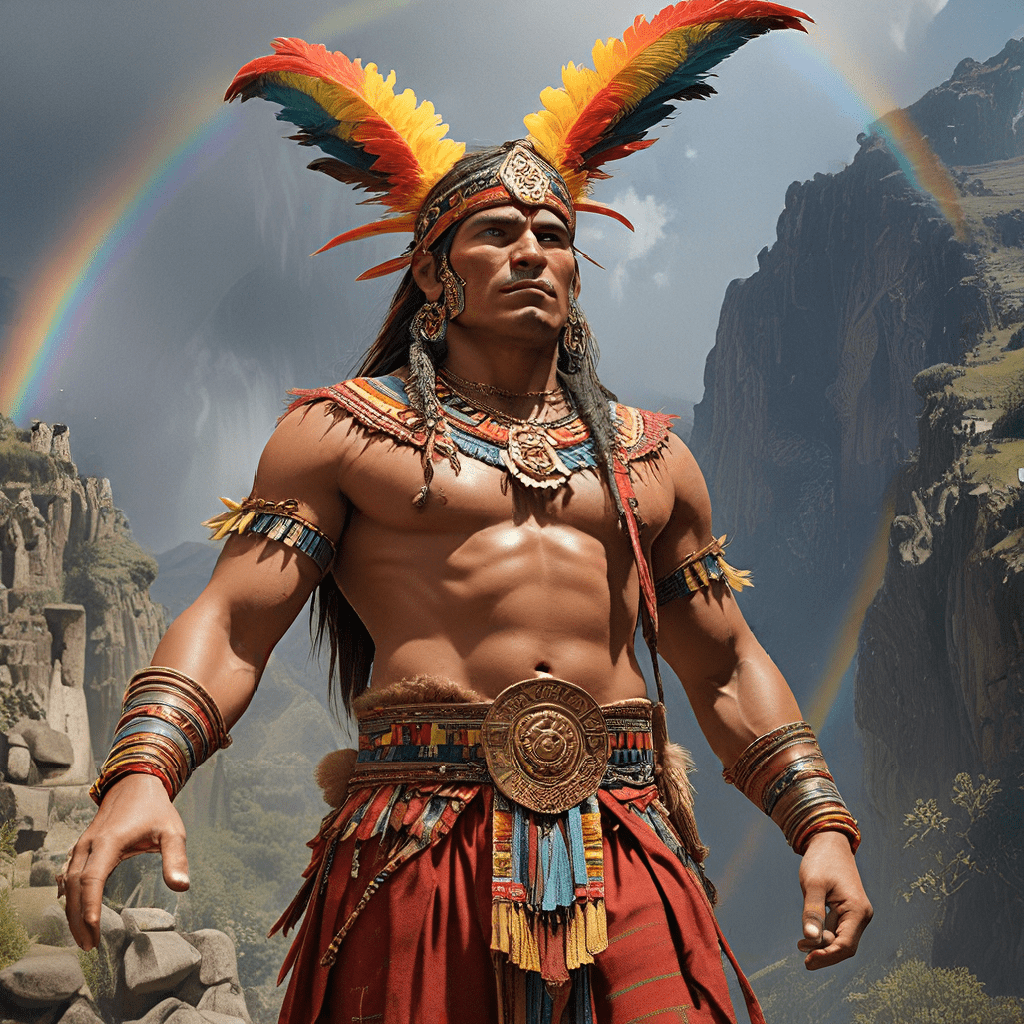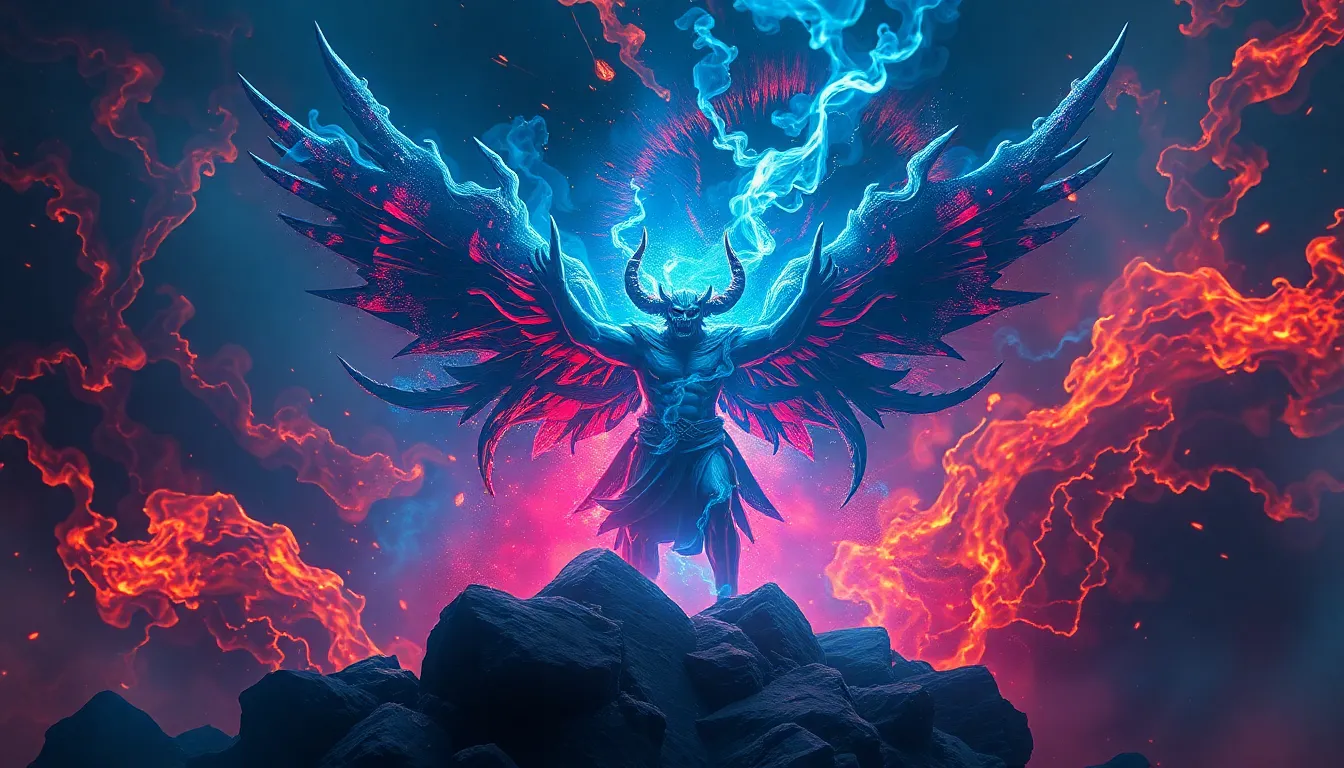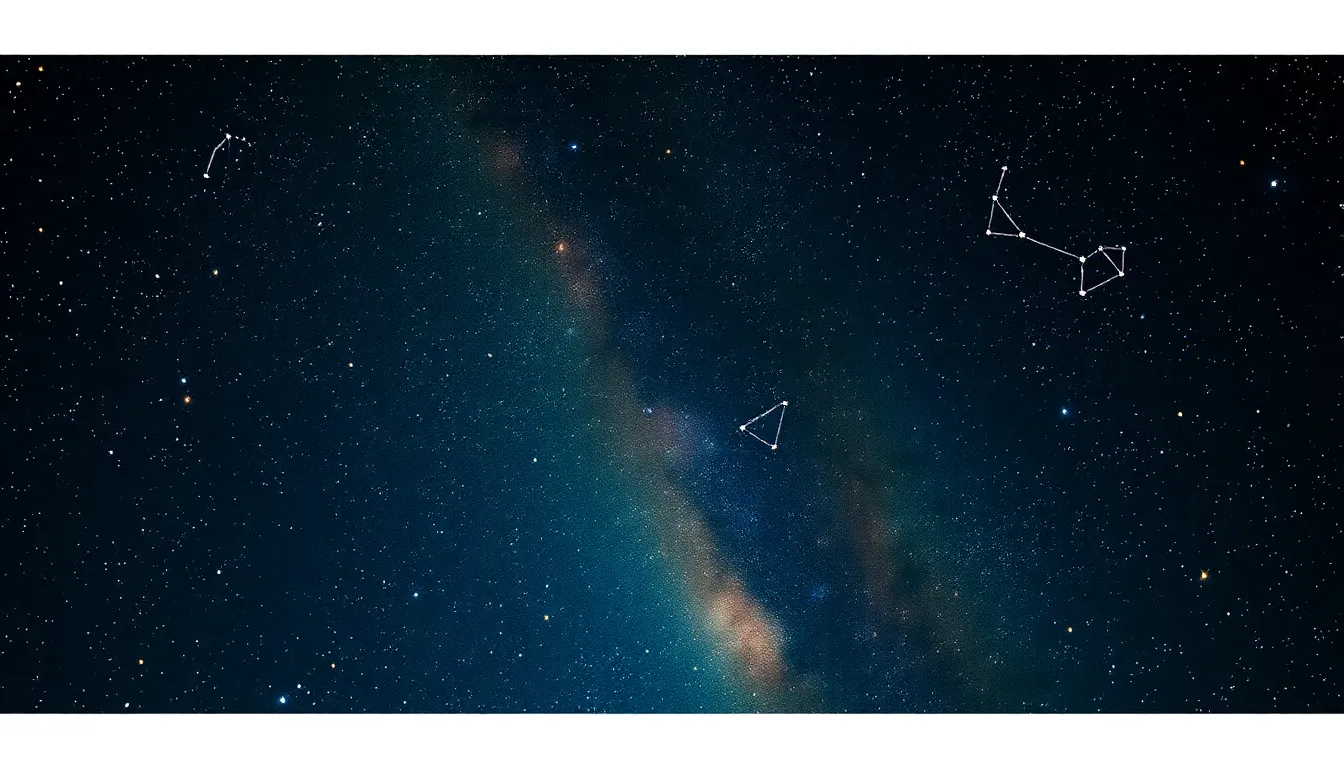The Incan Myth of Urcuchillay: The Rainbow God
The Incan myth of Urcuchillay, the rainbow god, is a captivating tale that reveals the profound connection the Incas had with nature and the cosmos. Urcuchillay is a powerful and enigmatic figure in Incan mythology, representing the divine forces of nature and the celestial realms. This myth serves as a window into the rich cultural tapestry of the Inca civilization, offering insights into their belief system, religious practices, and artistic expressions.
The Legend of Urcuchillay
The legend of Urcuchillay, the rainbow god, is a captivating story that has been passed down through generations of Incan people. Urcuchillay was believed to be the son of Inti, the sun god, and Mama Killa, the moon goddess. This divine lineage bestowed upon him immense power and influence over the natural world.
Urcuchillay was said to dwell high in the Andes Mountains, where he observed the world below. His presence was marked by the appearance of rainbows, which were considered to be his physical manifestation. When Urcuchillay appeared in the sky, the Incas believed he was bringing good fortune, fertility, and prosperity.
Urcuchillay’s Role in Incan Mythology
Urcuchillay held a significant role in the Incan belief system. He was revered as a deity who controlled the elements, particularly the rain, lightning, and thunder. His presence was invoked during ceremonies and rituals, seeking blessings for crops, good weather, and protection from natural disasters.
The Incas believed that Urcuchillay had the power to bring life to the land, nurture the crops, and ensure the well-being of the people. He was seen as a benevolent deity, a force of nature that could be both destructive and beneficial.
Urcuchillay and the Elements
Urcuchillay was believed to have a strong connection to the elements, particularly the rain, lightning, and thunder. He was often depicted as a storm god, commanding the forces of nature with a mighty hand.
The Incas believed that Urcuchillay controlled the rain, which was vital for their agricultural practices. They would often perform rituals and offerings to appease him, hoping for a bountiful harvest. Thunder and lightning were also associated with Urcuchillay's power. It was believed that he could unleash these forces to punish those who disobeyed him or acted against the will of the gods.
Urcuchillay and the Creation Myth
In the Incan creation myth, Urcuchillay plays a significant role in the formation of the world. It is said that he emerged from the depths of the ocean, bringing forth the mountains, valleys, and rivers. He then created the first humans from clay, breathing life into them and giving them dominion over the earth.
This myth underscores the importance of Urcuchillay in Incan cosmology. He was seen as a creator deity, responsible for the very existence of the world and its inhabitants.
Symbolism of the Rainbow
The rainbow held immense symbolic significance in Incan culture, serving as a visible manifestation of Urcuchillay's presence. The rainbow was believed to be a bridge between the earthly realm and the celestial realm, a pathway for the gods to communicate with humans.
The vibrant colors of the rainbow were also associated with the different aspects of Urcuchillay's power. Red was for fire and passion, yellow for the sun and prosperity, green for life and fertility, and blue for the sky and peace.
Urcuchillay and the Celestial Bodies
Urcuchillay's connection to the celestial bodies also played a significant role in Incan mythology. As the son of Inti, the sun god, and Mama Killa, the moon goddess, Urcuchillay was seen as a celestial being, embodying the power of the sun, moon, and stars.
The Incas observed the movement of the celestial bodies, particularly the sun and moon, and their influence on the natural world. They believed that Urcuchillay's actions were reflected in the patterns of the stars, the phases of the moon, and the cycles of the sun.
The Incas developed a sophisticated system of astronomy, using their observations of the celestial bodies for agricultural planning, calendar development, and religious rituals. Urcuchillay's celestial connection was a crucial aspect of their understanding of the universe and the divine order.
Theories on the Origin of the Myth
The origin of the Urcuchillay myth remains a subject of speculation and debate among scholars. Some theories suggest that the myth originated from the Incas' observations of the natural world, particularly the phenomena of rainbows, storms, and celestial events.
Others believe that the Urcuchillay myth evolved over time, incorporating elements of earlier Andean cultures and beliefs. The presence of similar rainbow deities in other Andean cultures suggests a possible shared origin or exchange of ideas.
Regardless of its precise origins, the Urcuchillay myth reflects the Incas' deep connection to nature and their belief in the power of the divine.
Urcuchillay as a Representation of Divine Power
Urcuchillay embodies the very essence of divine power in Incan mythology. He represents the forces of nature, the celestial realms, and the interconnectedness of all things.
The Incas believed that Urcuchillay was a living embodiment of the divine, capable of both creation and destruction. He was a powerful force to be respected and revered, a reminder of the vast and mysterious power that governs the natural world.
Influence of Urcuchillay on Incan Culture
The Urcuchillay myth had a profound influence on Incan culture, shaping their art, religion, and social structure. The imagery of rainbows, storms, and celestial bodies permeated Incan art, appearing in textiles, ceramics, and architecture.
The worship of Urcuchillay was a central aspect of Incan religion, with rituals and offerings performed to appease him and seek his favor. The myth of Urcuchillay also served as a moral compass, reminding the Incas of their place in the natural order and the importance of respecting the divine.
Modern Interpretations of the Urcuchillay Myth
The Urcuchillay myth continues to resonate with people today, offering insights into the cultural heritage of the Inca civilization. Modern interpretations of the myth often emphasize the themes of nature, spirituality, and the interconnectedness of all things.
The Urcuchillay myth serves as a reminder of the importance of respecting the natural world and its forces. It also highlights the enduring power of stories and myths to connect people across cultures and generations.
FAQ
Q: What is the Urcuchillay myth?
A: The Urcuchillay myth is a story about a rainbow god in Incan mythology who controls the elements, particularly rain, lightning, and thunder.
Q: What is the significance of the rainbow in the myth?
A: The rainbow is a visible manifestation of Urcuchillay's presence and a bridge between the earthly realm and the celestial realms.
Q: What is the role of Urcuchillay in the creation myth?
A: Urcuchillay emerged from the depths of the ocean, creating the mountains, valleys, and rivers, and breathing life into the first humans.
Q: How did the Urcuchillay myth influence Incan culture?
A: The myth shaped Incan art, religion, and social structure, with imagery of rainbows, storms, and celestial bodies appearing in their art and rituals.
Q: What are some modern interpretations of the Urcuchillay myth?
A: Modern interpretations often focus on themes of nature, spirituality, and the interconnectedness of all things.



